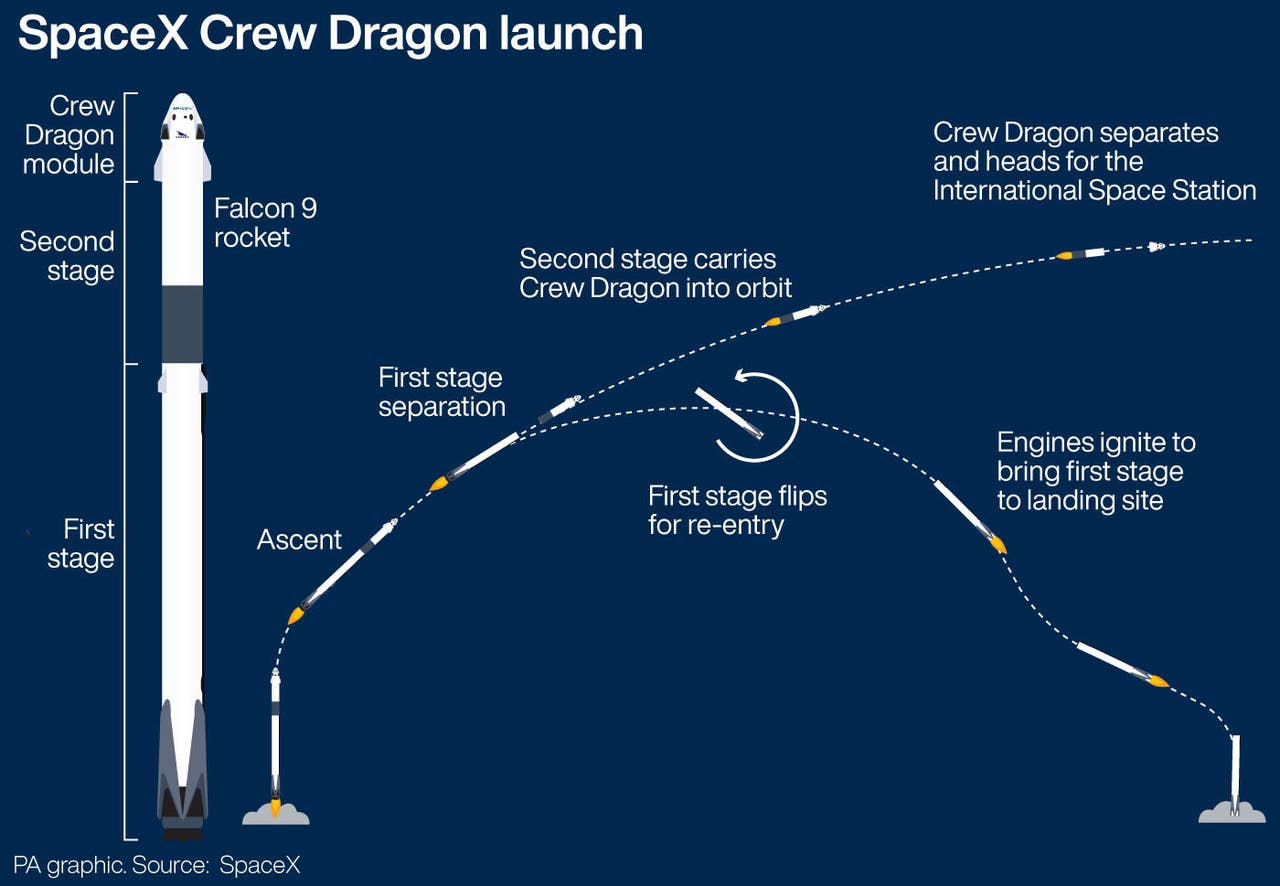SpaceX and Nasa set to make history as they launch astronauts from US soil
The mission, named Demo-2, will see SpaceX become the first private company to send astronauts into space.
/cloudfront-us-east-1.images.arcpublishing.com/shropshirestar.mna/5VUAWLKEA5CTTNBISXFXPJF75I.jpg)
Two Nasa astronauts are on course to make history as they launch into space from US soil for the first time in nine years.
Preparations are under way for Robert Behnken and Douglas Hurley to travel to the International Space Station (ISS) on a rocket and capsule system built by billionaire entrepreneur Elon Musk’s firm.
Nasa administrator Jim Bridenstine tweeted to say launch activities will proceed for the time being, as Nasa and SpaceX continue to monitor the weather conditions.
“We are proceeding toward a 4:33 (21:33 BST) launch,” he said.
At present there is a 50% chance the weather will be good enough for the launch, according to the US Air Force’s 45th Weather Squadron, which monitors the weather for air and space operations.
If all goes as planned, the mission, named Demo-2, will see SpaceX become the first private company to send astronauts into space.
Since ending its Space Shuttle programme in 2011, Nasa has depended on Russia’s space agency Roscosmos to transport its astronauts to the space station.
In 2014, Nasa awarded SpaceX and Boeing contracts to provide crewed launch services to the space station as part of its Commercial Crew Program.

According to Nasa, the aim of the Demo-2 mission to show SpaceX’s ability to ferry astronauts to the space station and back safely.
It is the final major step required by SpaceX’s astronaut carrier, the Crew Dragon, to get certified by Nasa’s Commercial Crew Program for more long-term manned missions to space.
SpaceX’s Falcon 9 rocket will take off from the launchpad 39A at the Kennedy Space Centre in Florida, carrying the Crew Dragon spacecraft where Mr Behnken, 49, and Mr Hurley, 53, will be strapped in.
Mr Behnken will serve as the mission’s joint operations commander and take responsibility for the rendezvous, docking and undocking of the Dragon capsule, while Mr Hurley will be in charge of the launch, landing and recovery of the vehicle in his role as the Crew Dragon spacecraft commander.
Around 10 minutes after lift-off, the rocket will separate into what is called a first stage and a second stage.
The first stage will return to a SpaceX landing ship which will be stationed in the Atlantic Ocean off the coast of Florida, while the second part of the rocket continue the journey with the Crew Dragon.
Once in orbit, the Crew Dragon will separate from the second stage and travel at around 17,000mph.
It should be possible to see the spacecraft from the UK shortly after lift-off, according to British astronaut Tim Peake.
Major Peake said the SpaceX capsule should be visible towards the west, to the right of the moon at around 9:50 pm UK time.
It is expected to rendezvous, and dock, with the space station on Thursday at 4:30pm UK time.
Mr Behnken and Mr Hurley will join the three other space station residents – Nasa’s Chris Cassidy and Russia’s Anatoli Ivanishin and Ivan Vagner – to become members of the Expedition 63 crew.
The mission is expected to last anything between one and four months where they will perform further tests on the Crew Dragon.